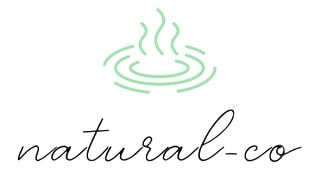Senior Demand Analysis — The Silver Wave Powering Wellness Travel
The world is aging — and that’s not a challenge; it’s an opportunity. By 2030, one in six people globally will be over 60 years old. This demographic shift is reshaping everything from healthcare to housing — and most visibly, wellness tourism.
Today’s senior travelers are healthier, wealthier, and more curious than ever. They seek experiences that combine relaxation, recovery, and renewal, making hot springs, spa retreats, and wellness villages some of the most desirable destinations.
For hot spring operators and investors, understanding this group means understanding the future of the market itself.
Demographic Drivers: Who Are the New Senior Travelers?
| Region | % of Population 60+ (2025 est.) | Key Travel Traits |
|---|---|---|
| Japan | 32% | Long-stay health tourism, traditional onsen culture |
| Europe | 28% | Preventive wellness, spa heritage, eco-travel |
| North America | 24% | Active retirement, luxury wellness resorts |
| China | 20% | Domestic travel boom, health-focused leisure |
| ASEAN | 15% | Cross-border “medical & leisure” tourism |
Across these regions, older travelers no longer see “rest” as passive. They look for experiences that extend quality of life, not just leisure time.
What Seniors Want: Key Behavioral Insights
A. Comfort with Purpose
Wellness resorts are shifting from “luxury for the young” to comfort for the wise. Accessibility, privacy, and medical support now define experience quality.
B. Health + Community
Solo travel is being replaced by group wellness programs, family retreats, and intergenerational journeys. Social connection is part of the healing process.
C. Meaningful Design
Spaces that blend nature, calm, and local culture resonate with senior guests. Natural landscapes and mineral springs are especially valued for both physical and emotional relief.
D. Long-Stay Packages
Seniors often stay 2–4× longer than younger travelers. This supports hybrid models combining accommodation, nutrition, therapy, and preventive care — a major opportunity for operators.
Economic Impact: The Silver Economy in Action
The “silver economy” — spending by people aged 55 and above — is projected to reach $15 trillion globally by 2035.
Within the wellness and hospitality sectors, that means more investment in:
-
Assisted wellness villages
-
Thermal spa memberships
-
Health-integrated travel packages
-
Senior-friendly real estate linked to hot springs
| Sector | Spending Trend (2024–2030 CAGR) | Opportunity |
|---|---|---|
| Health Tourism | +7.8% | Spa + Medical partnership models |
| Senior Living Wellness | +6.9% | Long-stay resorts & hybrid healthcare |
| Hot Spring Tourism | +6.2% | Domestic “healing travel” demand |
| Eco-Retreats | +5.7% | Nature-linked recovery stays |
For investors, the takeaway is clear: aging equals engagement. The more holistic and purpose-driven the offering, the higher the repeat rate and brand loyalty.
How Natural-Co Tools Help You Decode Demand
The Senior Demand Analysis Tool on Natural-Co turns demographic complexity into clear insights.
It helps you:
-
Identify regional demand clusters
-
Compare spending potential across markets
-
Predict occupancy based on aging trends
-
Visualize “wellness intent” from travel data
These insights allow hot spring operators to plan expansions and tailor packages to match senior travelers’ preferences — not assumptions.
With just a few inputs, you can see where the next wave of demand will come from — and what it values most.
Case Study Snapshot: Japan and Taiwan
-
Japan: Senior-focused onsen programs now make up over 40% of bookings in certain prefectures, driven by government-backed “health tourism” initiatives.
-
Taiwan: Hot spring hospitals integrate traditional therapy and preventive healthcare, creating a model that combines tourism with national health strategy.
These examples show how data-driven planning can turn aging into an innovation catalyst.
Looking Ahead
The senior segment isn’t a niche — it’s the core of wellness travel’s future. Operators that design for accessibility, sustainability, and meaningful engagement will gain an enduring advantage.

